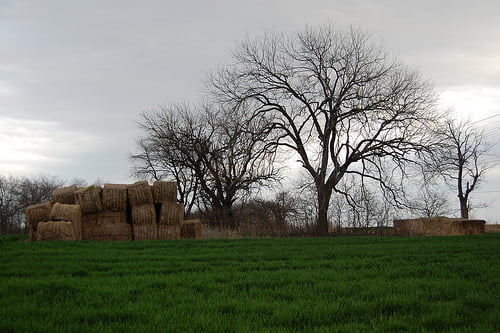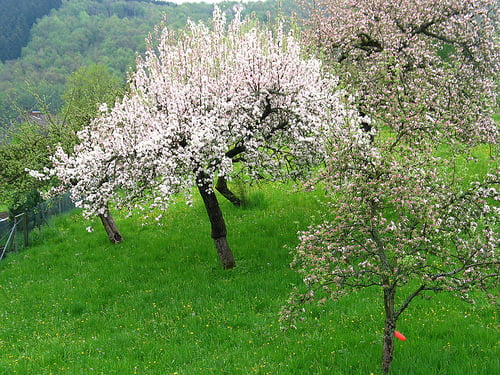A wildflower garden sounds very interesting, doesn’t it? One thinks of long walks in the woods or country, collecting material and the fun in starting your own real natural garden! Think again before you get to excited. It is not for the fainthearted and needs a lot of thought and sheer guts!
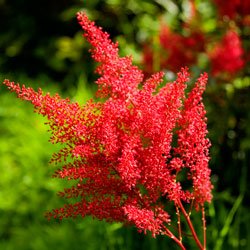
Many people say they have no luck at all with such a garden. To me however, it is not a question of luck but of understanding. Wild flowers are like people and each has its own personality.
What a plant has been used to in Nature, it still needs in the garden to flourish. In fact, when it is removed from its own sort of environment, it quickly sickens and dies. What needs to be done is to copy mother Nature herself.
If you are considering to start a wildflower garden, keep in mind that a lot off planning, preparation and hard work needs to be done in advance. Being said all this, no other garden can be as enjoyable as a wildflower garden and will lack far in splendour.
First, you have to study and make sure which flowers or plants can be re-located and/or which specimens or seeds can be taken from.
You also need to know which are protected species, therefore to be left alone and which are maybe pests. Please do not end up in jail! Once you have made a choice about certain flowers, notice the soil they are in, the place, conditions, surroundings and neighbours.
Suppose you find dog-tooth violets and windflowers growing together, do the same when placing them in your garden. When you find a certain violet enjoying open air, give it the same privilege in its new environment.
Do you catch the drift? If you wish wild flowers to grow in a tame garden, make them feel at home. Cheat them into believing that they are still in their native area, or a better one according to their needs.
You do not wish to bring those plants back to wait a night or day before planting them. They should go into their new quarters at once. The bed into which these plants are to be relocated should be prepared carefully before the time – while studying the conditions they are growing in and trying to reproduce the same in your garden.
People tend to think that plants should have soil saturated with water. The country or woods themselves have a very good drainage system and this is not the case. The bed needs soil of the same type the plants are coming from, deep, rich, and full of leaf manure.
The under drainage system should be excellent for the plants not to go into water-logged ground. It might be that you will have to dig your garden up deeply, put some stone on the bottom and cover it with good soil for drainage. If possible, cover the top with soil you brought from the same area you plan to fetch the flowers.
Did it strike you yet how hygienic plants are? Plenty of fresh air, proper drainage and good food are fundamentals for them to flourish. It is easy, if you study these plants, to find out what they like. Do not make the mistake of huddling them all together under poor drainage and other conditions. They are wild and should stay wild – close to nature.
Wild flowers ought to be transplanted after blossoming time is over. Take a trowel, basket and black bags with when you take the trip to fetch them.
As you dig the plants up – a columbine or a hepatica, be sure to take with the roots as much of the plants own soil as possible and put it in a bag. Try not to disturb the roots and soil – to be replanted as is.
At home before planting, water the soil well. Try to get the plant to its new home as quick as possible with as little root and soil disturbance as possible. Do not let plants stand over for a night or day before planting them!
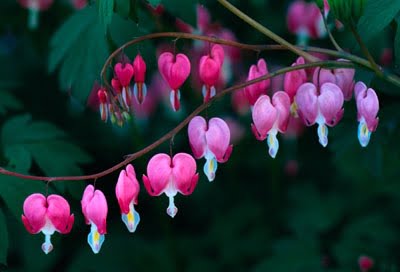
A good idea is to have a wildflower garden giving a succession of bloom from early spring to late fall. We may have for instance during March the hepatica, spring beauty and saxifrage.
Then comes April, bearing in its arms the beautiful columbine, the tiny bluets and wild geranium. For May, there are the dog-tooth violet and the wood anemone, false Solomon’s seal, Jack-in-the-pulpit, wake robin, bloodroot and violets. June will give the bellflower, mullein, bee balm and foxglove.
I would choose the gay butterfly weed for July. Let turtle head, aster, Joe Pye weed, and Queen Anne’s lace make the rest of the season brilliant until frost. Once started you’ll keep on adding to this wild-flower list!
A bit more about some of these wild flowers…
There is no one who doesn’t love the hepatica. Before the spring has really decided to come, this little flower pokes its head up and puts all else to shame. Tucked under a covering of dry leaves the blossoms wait for a ray of warm sunshine to wake them up.
These embryo flowers are further protected by a fuzzy covering which reminds one of a similar protective covering which new fern leaves have. In the spring, a hepatica plant wastes no time on getting a new suit of leaves. As soon as the blossom has had its day, the new leaves start immediately to be ready for next season.
You will find hepaticas growing in clusters, sort of family groups. They are likely to be found in rather open places in the woods. The soil is found to be rich and loose. Therefore, these should go only in partly shaded places and under good soil conditions.
If planted with other specimens rather give them the benefit of an exposed position so that they can catch the early spring sunshine. I should cover hepaticas with a light layer of leaves in the fall. During the last days of February, unless the weather is extreme, take this leaf covering away. You’ll find the hepatica blossoms all ready to poke up their heads.
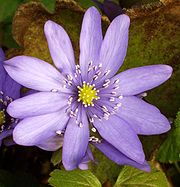
The “spring beauty” hardly allows the hepatica to get ahead of her. With a white flower which has dainty tracings of pink, a thin, wiry stem, and narrow, grass-like leaves, this spring flower cannot be mistaken.
You will find spring beauties growing in great patches in rather open places. Plant a number of the roots and allow the sun good opportunity to get at them for this plant loves the sun.
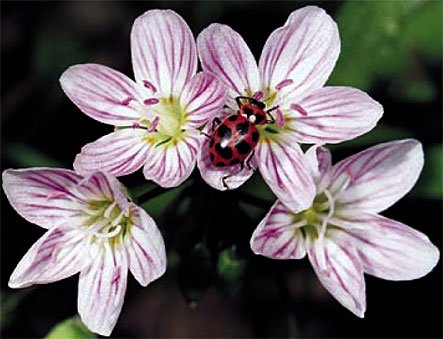
The other March flower mentioned is the saxifrage. This belongs in quite a different sort of environment. It is a plant which grows in dry and rocky places. Often one will find it in cracks of rock.
There is an old tale that the saxifrage roots twine about rocks and work their way into them so that the rock itself splits. Anyway, it is a rock garden plant. It can be found in dry, sandy places right on the borders of a big rock. It has white flower clusters borne on hairy stems.
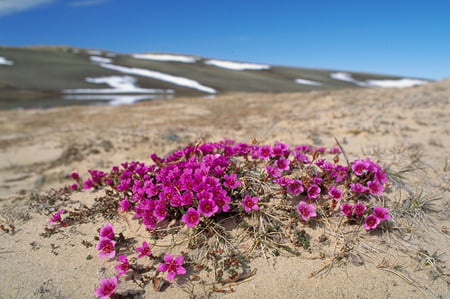
The columbine is another plant that is quite likely to be found in rocky places. Standing below a ledge and looking up, one most probably will see one or more columbine plants nestled here and there in rocky crevices.
The nodding red heads bob on wiry, slender stems. The roots do not strike deeply into the soil – in fact, often the soil hardly covers them. Just because the columbine has little soil, it does not mean soil conditions can be ignored. It always has lived and always should live under good drainage conditions.
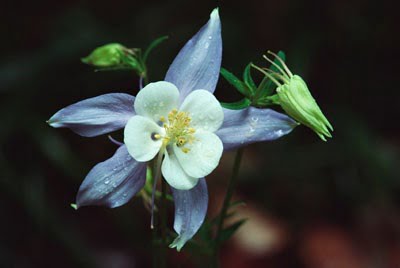
You will soon develop a personal affection for the bluets. When they come, it feels like outdoors nature is starting to prepare for summer. They start with rich, lovely, little delicate blue blossoms.
As June gets hotter and hotter, their colour fades a bit, until at times they look quite worn and white. Some people call them “Quaker ladies”, others “innocence”. Under any name, they are charming.
They grow in colonies, sometimes in sunny fields, sometimes by the road-side. From this, you can learn that they are more particular about open air and sunlight than about the soil.
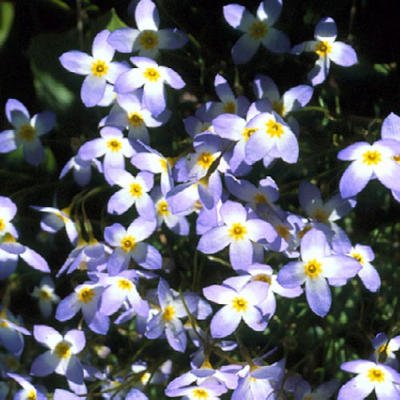
If you want a flower to pick and use for bouquets, then the wild geranium is not your flower. It droops very quickly after picking and almost immediately drops its petals.
The purplish flowers are showy, and the leaves, while rather coarse, are deeply cut. This latter effect gives a certain boldness to the plant that is rather attractive. It is found in rather moist, partly shaded areas of the woods. This plant adds good and permanent colour as long as blooming time lasts.
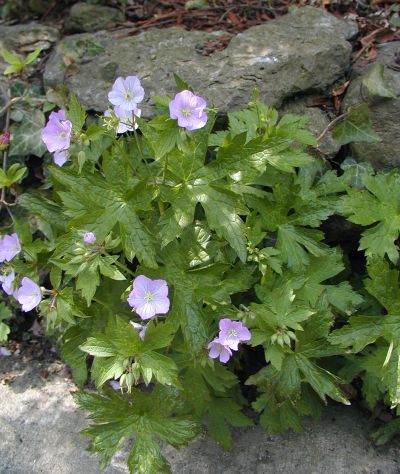
There are numerous flowers in nature – to mention all will take up a few pages. The main criteria however exist for all, to understand the conditions and environment they need to survive and to create the same in your garden.
If you fear bad results, start with one or two flowers first and study what they need. It is a real case study of plants and their needs. Having mastered a few, add more to your garden another year.
You will soon get the hang of it, love your wildflower garden and be envied by many who set their eyes on it.

[wd_hustle id=’share’ type=’social_sharing’]



